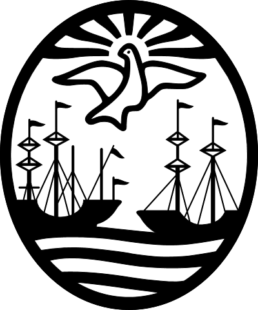The recently construced Environmental Park in Buenos Aires has the ability to process construction and demolition, pruning, organic, and plastic waste, reducing waste sent to landfill and emissions, while saving money.
The Environmental Park, constructed in 2012, processes almost 35% of waste generated in Buenos Aires, reducing waste sent to landfill and preventing greenhouse gas emissions. Buenos Aires was one of the first cities in South America to process different waste streams at a single facility. The Environmental Park processes four waste streams: construction and demolition, pruning waste, organic, and plastic, and includes an education center. Covering 85 hectares, the treatment plants and education center are connected by footbridges, allowing visitors to walk safely through the facility and learn the importance of recycling, reducing, and reusing waste as well as composting.
In addition to reducing waste sent to landfill and educating the public, the Environmental Park was created using principles of sustainable design, with rainwater collected for irrigation, a solar thermotank, floors made from recycled materials, a green amphitheater, and native and non-native plants that create a forest curtain between the facility and the surrounding suburb. With the help of the Environmental Park, Buenos Aires aims to treat 100% of waste generated in the city by 2020.
31,173 metric tons of CO2 reduced in 2016 due to the Environmental Park
The challenge
In 2012, Buenos Aires sent more than 2 million metric tons of waste to landfill, generating a huge amount of greenhouse gas emissions and costing the city $18 per metric ton. In constructing the Environmental Park, with the ability to treat construction, pruning, organic and plastic waste, the city has reduced the amount of waste sent to landfill and, by doing so, reduced associated costs and greenhouse gases.
Co-benefits
Economic The Construction and Demolition Facility in the Environmental Park can process 2,400 metric tons of waste daily, saving the city about $20,600 per day.
Environmental 18,000 metric tons of pruning waste was treated at the Environmental Park and reused for mulch or soil stabilizer from June 2015 to April 2016.
Social The Ministry of Environment works with the Ministry of Education to encourage primary schools, secondary schools, and universities to visit and tour the Environmental Park to instill in youth the importance of waste management and other environmental issues.
About Buenos Aires
Buenos Aires is the capital and most populous city of Argentina. “Buenos aires” can be translated as “fair winds” or “good airs”. The Greater Buenos Aires conurbation, constitutes the fourth-most populous metropolitan area in the Americas, with a population of around 17 million. Buenos Aires is considered an ‘alpha city’ by the study GaWC5. Buenos Aires’ quality of life was ranked 81st in the world and one of the best in Latin America in 2012, with its per capita income among the three highest in the region. Buenos Aires is a top tourist destination, and is known for its preserved Spanish/European-style architecture and rich cultural life.


